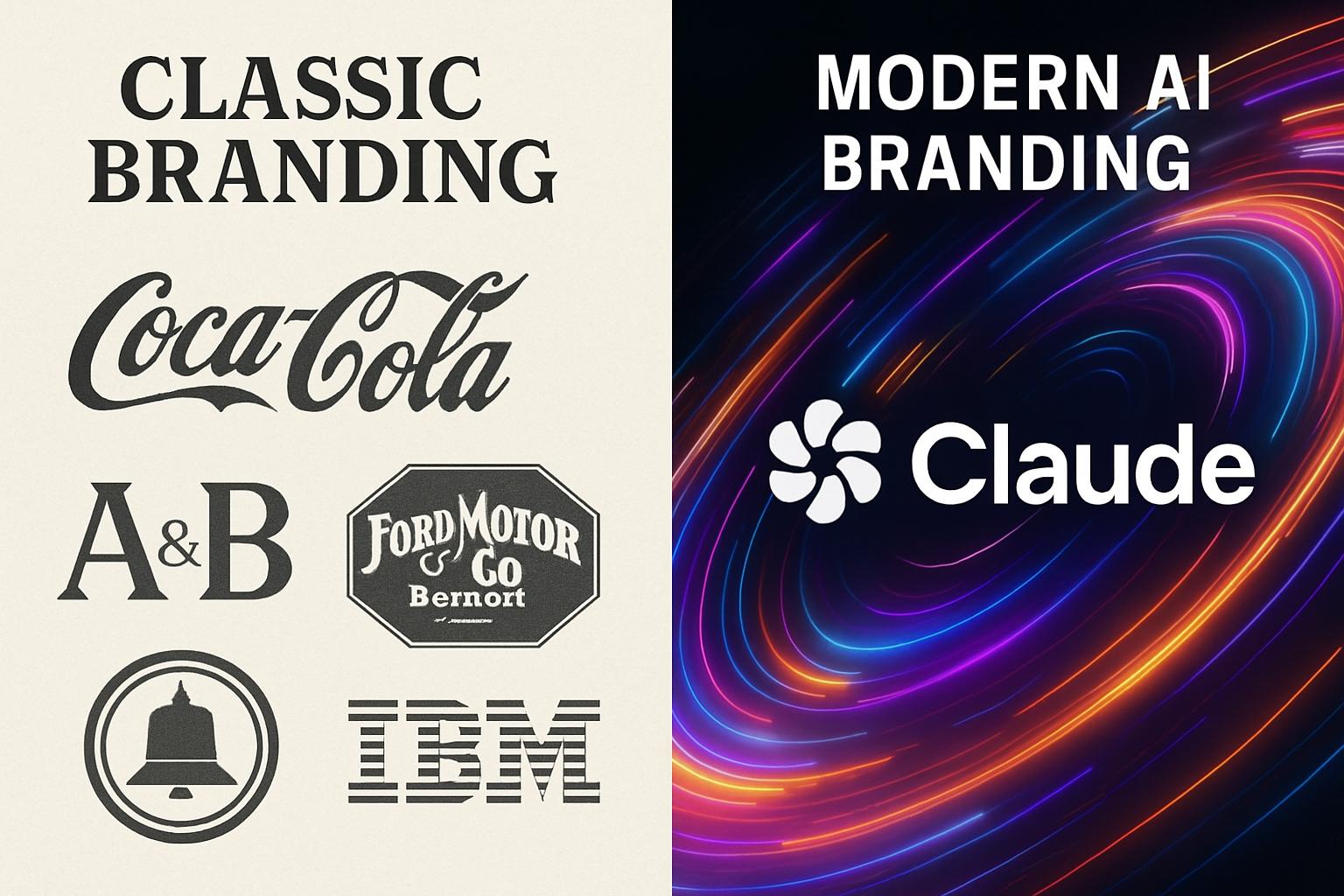
AI CERTS
3 hours ago
Anthropic’s AI branding evolution redefines Claude
Industry observers describe a clear cognitive collaboration emphasis. However, skeptics still question whether rhetoric matches real-world performance. This article dissects the mechanics, outcomes, and risks behind the strategy. Readers will learn why the ideation-execution workflow matters and where future friction may emerge.
Market Context And Drivers
Global AI spend keeps rising, yet customer trust remains volatile. Therefore, brand narratives that stress augmentation gain traction. Anthropic seized this opening by spotlighting safety, transparency, and long-form reasoning. In contrast, rival campaigns focus on speed or platform lock-in. The result is distinctive symbiotic relationship marketing that courts problem solvers rather than casual users.

Furthermore, macro signals support the choice. Enterprises now demand auditability, explainability, and data residency assurances. Claude’s positioning speaks directly to these procurement checklists, satisfying a growing professional integration focus. Consequently, decision makers feel empowered to experiment without reputational risk.
These context shifts explain why the company centered its second major rebrand on collaboration. Nevertheless, the market remains crowded, and attention is fleeting. These drivers show why differentiation matters. Meanwhile, deeper product changes reinforce the message.
Product Enhancements Underpin Promise
Anthropic aligned features with messaging to avoid hollow claims. Memory now preserves project context across sessions, enabling continuous dialogue. Moreover, voice mode lets users think out loud, tightening the human-machine loop. Extended context windows support multi-hour reasoning, a practical win for the ideation-execution workflow.
Developer-centric tooling also advanced. Claude Code coordinates multi-file projects and long debugging sessions. Consequently, software teams treat the model as a co-engineer rather than a code snippet generator. This shift embodies cognitive collaboration emphasis at an interface level.
Key supporting upgrades include:
- Workspace integrations with Slack, Notion, and Figma keep Claude “in flow.”
- File creation APIs allow structured outputs for audits and reviews.
- Safety tools surface reasoning traces for compliance teams.
These investments convert symbiotic relationship marketing into tangible value. Consequently, the promise feels credible, not performative. Product-market fit now fuels revenue momentum, discussed next.
Enterprise Revenue Growth Signals
Funding and revenue numbers reinforce the story. Anthropic’s Series F raised $13 billion, valuing the firm at roughly $183 billion. Meanwhile, reported run-rate revenue jumped from $1 billion to about $7 billion within nine months.
- 300,000+ business customers now deploy Claude.
- Large accounts expanded sevenfold year over year.
- Claude Code exceeded a $500 million run-rate soon after launch.
Moreover, internal targets forecast $9 billion by year-end and up to $26 billion in 2026. Consequently, investors view the “thinking partner” thesis as monetizable. These metrics also validate the professional integration focus because enterprise buyers are paying premiums for trust.
Financial momentum underscores this AI branding evolution. However, ad creativity also shapes perception, which the next section explores.
Creative Campaign Keep Thinking
The September 2025 “Keep thinking” campaign delivered high-attention storytelling. A 90-second hero film ran across sports, streaming, and print. The spot acknowledges AI fears, then pivots to optimism, illustrating human-Claude co-creation. Andrew Stirk described it as a promise to problem solvers.
Mother’s creative direction avoided techno-utopian clichés. Instead, visuals mirrored messy brainstorming sessions, reinforcing cognitive collaboration emphasis. Consequently, viewers see an AI companion, not a rival.
Furthermore, timing synchronized with the product blog “Turning Claude into your thinking partner.” This orchestration converts symbiotic relationship marketing into a coherent narrative arc. These efforts boost brand recall while nurturing deeper engagement. Yet partnerships also expand reach.
Strategic Partnership Ecosystem Impact
Anthropic leverages cloud titans for distribution. Microsoft added Claude to Copilot Studio, while Amazon offers the model through Bedrock. Moreover, Google supplies compute resources. Consequently, enterprises integrate Claude within existing stacks without heavy lift.
These alliances exemplify a deliberate professional integration focus. They also illustrate the live ideation-execution workflow when Claude surfaces inside developer tools. Additionally, the deals hedge compute costs, supporting scale.
Meanwhile, channel partners validate safety claims through shared governance frameworks. This cooperation extends the AI branding evolution beyond owned channels. Nevertheless, competitors continue pressing advantages, demanding clear differentiation.
Differentiation Against Leading Rivals
OpenAI, Google, and Microsoft often emphasize speed, plug-ins, or platform dominance. In contrast, Anthropic stresses augmentation and restraint. Consequently, trust narratives become a market wedge.
Moreover, the company’s symbiotic relationship marketing counters fears of job loss. Developers feel empowered, not displaced. Additionally, safety tooling answers regulatory scrutiny, deepening cognitive collaboration emphasis.
However, delivering multi-hour sessions remains compute-intensive. Critics warn that costs could erode margins. Therefore, ongoing optimization and partnership depth will decide long-term defensibility. These distinctions inform the risk picture.
Risks And Future Outlook
Skeptics call “thinking partner” a slogan until independent benchmarks confirm longitudinal reliability. Moreover, mass-market users may ignore collaboration angles, preferring quick answers. Operational expenses for long context handling remain high. Nevertheless, projected revenues suggest investors accept near-term margin strain.
Anthropic plans additional memory improvements and domain-specific models. Consequently, the ideation-execution workflow should tighten further. Professionals can enhance their expertise with the AI Marketing Strategist™ certification. The program aligns with the ongoing professional integration focus.
Overall, the company’s AI branding evolution now rests on execution quality. Continuous evidence will determine whether perception turns into sustained loyalty.
Conclusion
Anthropic reframed Claude from chatbot to collaborator, fusing messaging, product, and partnerships. Consequently, revenue and brand metrics surged. Moreover, the firm anchored its pitch in safety and context retention, reinforcing cognitive collaboration emphasis. Yet compute costs and proof demands persist.
Nevertheless, the strategy offers a blueprint for differentiated AI branding evolution. Professionals should monitor forthcoming benchmarks and explore certifications that build complementary skills. Take the next step and deepen your understanding today.



